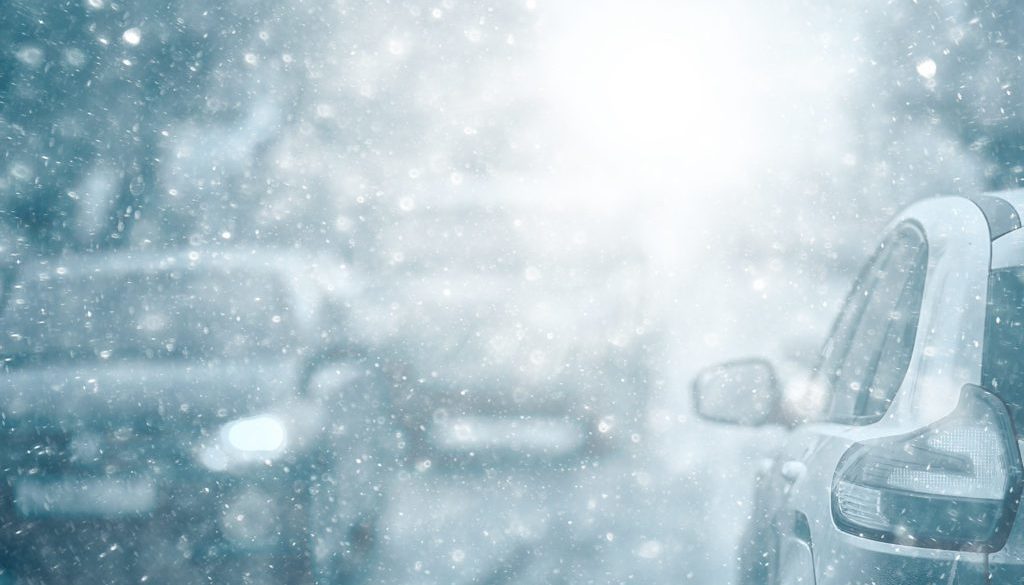Assurer la sécurité des communautés pendant les tempêtes hivernales
Like any other natural disaster, winter storms are increasing in frequency across the U.S., and the “winter storm season” is lasting longer than ever. In addition to their expected increase during the fall, they are also happening later in the year, creating a much longer, more dangerous season.
These storms are a typical part of people’s lives in the Great Plains states and eastern New England. The Dakotas, Iowa, Nebraska, New Hampshire, Minnesota, and Massachusetts experience the highest level of heavy storms.
Not only do winter storms bring extremely low temperatures, but they can also cause severe wind and flooding before, during, and after the winter weather. Because of the heavy precipitation, entire cities can be shut down, impacting daily life. In the last 40 years, the U.S. has seen 19 winter storms and nine freezes, which are anticipated to increase in frequency and intensity. This means that preparing communities for extreme winter weather is imperative in protecting safety and livelihood.
Winter Weather can Shut Down Entire Cities
The U.S. now averages 19 blizzards yearly, a drastic increase from just nine in 1994. Among causing billions of dollars in damages, winter storms can be dangerous. From 1980 to 2018, 1,044 people died from winter storms.
Heavy snowfall can cause excessive damage to the roofing, while hail and heavy rain can add stress to unstable structures. Roads become dangerous when covered with snow and ice, lasting for days as temperatures remain low. Extremely low temperatures can cause hypothermia, frostbite, and other health risks for those who may not have appropriate shelter.
Warning for winter storms can be given well in advance, but that doesn’t mean danger can be completely mitigated. Local governments, emergency personnel, and crisis managers need to prepare for potentially hazardous conditions and how to care for their communities in the middle of them.
Severe winter weather can leave communities with massive disruption, limit mobility, and put people at risk of illness and injury. Keeping everyone safe means being diligent with notifications about workplace and school closures, road closures, flight and train cancellations, and stay-at-home orders.
A mass communications system can send these types of alerts out as early as possible to prevent residents from making unnecessary journeys out into the cold while keeping first responders, businesses, healthcare institutions, and state/local officials aware of potentially dangerous conditions.
Preparing an Effective Action Plan Before Winter
Technology alone cannot do enough to effectively prevent threats brought on by winter storms. Local and state government officials, 9-1-1 operators, emergency responders, and key stakeholders in education and healthcare must be “in the know.” They also need a tool that helps them send out warnings as soon as a winter storm is detected, so everyone knows what actions to take when inclement weather hits.
Communities can begin implementing mass communication tools immediately so they are prepared for severe winter weather, even outside of winter months. A system incorporated into current emergency plans for businesses, local governments, hospitals, higher education institutions, and K-12 schools would help everyone know what to expect during blizzards and winter storms.
Duty and Care to All
A mass notification system that enables key stakeholders to create action plans and delegate tasks help keep entire communities safe, including those who are at-risk.
The Department of Health and Human Services (DHS) defines an at-risk individual as someone with access and functional needs — whether temporarily or permanently — that may interfere with their ability to access medical care during a disaster or public health emergency. At-risk populations include older adults, pregnant women, those with chronic health conditions, and those experiencing homelessness.
During natural disasters, at-risk populations are more likely to be seriously injured, so creating an action plan that includes protecting this population is a necessity. With tools that can set priorities and delegate tasks among emergency personnel, communities are better equipped to handle winter storms for all populations.
How Rave Mobile can help
K-12 Schools
Keep parents, faculty, and students informed of closures brought on by winter weather.
Hospitals
Hospitals can build partnerships with local services to ensure both patients and staff are well-cared for.
State and Local Community
Local and state governments can give advance warning, including real-time updates of the storm’s direction and intensity.
Corporate
Inform employees of possible closures and what to do if they are unable to work in the aftermath of a winter storm.
Higher Education
University officials can inform their campuses of extreme weather and provide action plans for closures and possible stay-at-home orders.
How multimodal messaging and task management can keep communities safe
Through a tactical incident collaboration tool, emergency managers can provide alerts to residents quickly and efficiently. Administrators can access preset templates that include key information on the type of emergency, data, location, and what action is needed next for both residents and key stakeholders.
With just three clicks, Rave Mobile’s mass notification platform sends alerts and automatically connects to devices through Common Alerting Protocol (CAP). Such a system enables public address systems and sirens to send information quickly.
Multimodal messaging can be sent out simultaneously in over 60 languages through one single touchpoint. This prevents a gap in communication and increases a community’s ability to stay safe during winter storms.
To learn how to incorporate winter weather disaster preparation into your community through the Rave Platform, do not hesitate to request a demo, or contact the Rave team.





